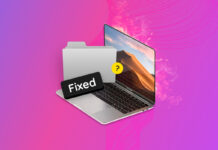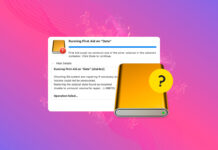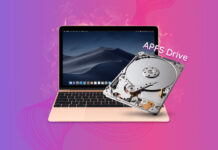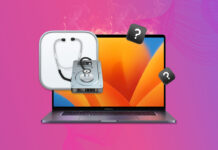Apple is prepping their release of 10.6 so I thought I would let those who might be interested in buying OS X Server what they are in for, and some things to pay attention to while debating your purchase. Below are some questions that I asked myself when looking into OS X Server.
How many different versions of OS X Server are there and what’s the difference between them?
OS X Server, much like client, only comes in one flavor; Ultimate. Now, there are two different licenses for OS X Server. There is the 10-client license and the Unlimited license. The client-access limit is only for file-sharing, nothing else. In other words if you intend to use OS X Server as a webserver you can get either version, it will not be any different.
The only difference is whether you want to share files or not, that’s where the limitation comes in.
How much do these versions cost?
For OS X Server the 10-client license is $499 US retail, while the unlimited client is only $999 US.
If I buy the 10-client version am I stuck with it?
No, you can upgrade to the unlimited-client version for $499 US. This can be done at any time. This is a viable option or small companies who want to use Macs and have less than 10 clients, but then expand.
Apple seems to come out with a new version of OS X every 12 to 18 months, do I have to keep buying new versions.
The short answer is no. You can stay on the version you have without upgrading. However, there is an add-on that Apple does sell call ‘Apple Maintenance Program’. This costs the same as the server itself. The idea is that if you purchase this you will receive any version of OS X Server that comes out for 36 months after activation of the Apple Maintenance Program.
This is probably the best investment you could make. Let’s use the following scenario. Let’s say Snow Leopard is out in February 2009 for example and given a 12 month ‘refresh’ cycle from Apple, 10.7 would be out in approximately January 2010, and let’s say 10.8 is out in January of 2011 and 10.9 in February of 2012. If you had to purchase a new copy of each of these that would be $1500 minimum; or $499 per copy. With this scenario you would have legitimate copies of each OS, so you can ostensibly install 3 copies of the server, one of each version.
If you were to buy the ‘Apple Maintenance Program’ on that first copy of 10.6 server you would be covered for 36 months. That means you would effectively get 4 versions of OS X Server for $1000. That brings the cost of each down to $250 for each version.
Granted, this scenario is an ideal situation and you’d more likely get an additional 2 versions bringing the cost down to $333 a piece, which is still a good bargain compared to the $499 a piece retail price tag.
For me, it’s actually a race against time as to when I buy the Apple Maintenace on my server, since I want to buy it before Snow Leopard arrives allowing me to get the free upgrade.
Why do I need server when I can do the same things with OS X Client.
This was one of the more difficult justifications to make to oneself when thinking about buying server. Both OS X Client and Server are the same code base, Unix. Therefore, allowing the same applications to run on both platforms without too many issues. The same applications that make OS X Client so good work just perfectly on server. The biggest benefit to server is the included administration tools.
The GUI tools that are included as part of OS X Server make administration very easy. For instance, I’ve installed a self-signed certificate on Windows and linux. It’s probably one of the most painful things I’ve had to do, even with instructions. With OS X Server installing a certificate is merely a few clicks. This simplification of installation is definitely a good thing to have.
Along with the Certificate installs, OS X Server includes an application called Server Admin. This application allows the remote administration, or local administration, of any of the services that your OS X Server installation make be running. The interfaces does not limit you to one server, you can manage an unlimited number of servers from one Server Admin connection.
With OS X Client, you could install all of the web-server based items, php, mysql, ruby, perl and the like by hand, if you want to spend the time doing so, and keeping them up to date, but if you’re willing to be that geeky, it may not be a bad experiment to try your hand at compiling from source.
What Other things might be included that might entice me to buy OS X Server.
There are several things. If you have a bunch of Macs you can run Server as a Time Machine server, thereby eliminating the need for a Time capsule.
If you’re managing a bunch of Macs or a bunch of different setups of Macs you can use the ‘System Image Utility’ to store the images of those Macs and boot over the network using an image from the server.
Have you ever wanted to run an internal IM Server that’s secure, well OS X Server has iChat Server built right in. combining this with the ease of SSL certificates you can have your very own iChat server that’s secure using encryption.
What are some things that OS X Client does do that OS X Server doesn’t?
There is only one thing that might be a bit troublesome for certain users. The only issue that I’ve found so far is that Front Row it is not being actively updated like the Client. However, there is a way to manually update it and it will work without issue. Nobody is really sure why they do not update it for Server, but that’s Apple for you.
What type of Mac can handle OS X Server?
Any current Mac can handle OS X Server. The only thing to be aware of is that the Mac mini and all portables have a 2.5″ hard drive and may possibly be a bit slower than the normal 3.5″ hard drives. But for general usage, this is not a big issue at all.
This is just a few of the things I had to ask myself before I purchased OS X Server. If you have any questions or topics that you’d like covered please contact me via the ‘Bloggers’ link up on the top of the page.






